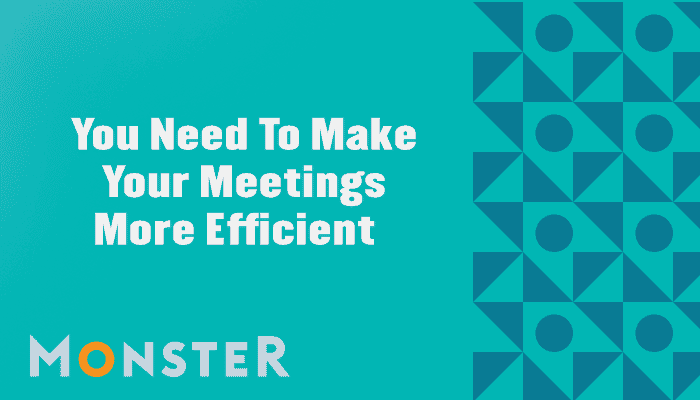You Need to Make Your Meetings More Efficient

Even as we working remotely, we are getting together more than ever.
That’s not necessarily productive. With the average UK employee wasting nearly 13 working days every year in unproductive meetings. In fact, nine out of ten workers admit that a third of each 60 minute meeting is a waste of company time.
You need to make sure your employees don’t dread going to meetings. Here is how you can make your meetings more efficient for your company:
Does this meeting need to happen?
One of the first lockdown ‘memes’ was the new adage ” I guess we’re about to find out how many of those meetings could have been emails”. That’s before video became ubiquitous, but it comes from a grain of truth. Let’s face it, many meetings turn out, in retrospect, to be unnecessary. There are many other ways to achieve the same goal without taking up people’s time. Something that is often forgotten is simply going and speaking to the people individually and getting the information that is required. A few questions you can ask yourself to decide if a meeting is essential are:
- Is this meeting a conversational two-way flow of information?
- Will this meeting remove or create roadblocks?
- Will all the relevant decision makers be at the meeting?
- Does everyone invited need to be there?
- What are the consequences if we don’t have the meeting?
If the meeting is just to update people – possibly it can be an email. If the relevant decision makers and stakeholders aren’t available you may find yourself just needing a second meeting later.
Don’t Have a Hidden Agenda
If you have decided that a meeting is necessary, ahead of the meeting circulate an agenda that will have everything that you are going to cover. Include where you will need input from certain people. By sending this ahead of time, it will ensure people can be prepared for the meeting and save wasting time. There is nothing worse for employees to turn up to a meeting where there is no clear structure, and a lot of the time it will often result in a follow-up meeting because of the lack of a clear goal in the initial one. Getting an agenda out can also allow people to highlight any issues ahead of time.
Respect People’s Time
If a meeting is going to run from 9am to 10am, make sure that it starts at 9am sharp and promptly finishes at 10. Also take into account what other big projects the people you’re inviting are working on, as if you’re trying to invite them when they have a big deadline approaching it may be best to seek input from elsewhere. And don’t default to an hour. 30 or 45 minutes may be enough if there is a tight agenda and you stick to it.
Don’t Wait for the Late
To make sure your meeting starts on time, a general rule of thumb to follow is to never wait for the latecomer. Everyone else has turned up on time ready to start so don’t punish them by waiting on the person who is running late or may not turn up at all. Generally video calls can be recorded and made available later for latecomers to catch up in their own time. If you can finish up even 5 minutes early, people will appreciate the time back, especially if they are on back to back calls.
Get Everyone Engaged
When you invite people to a meeting, there is an opportunity cost involved, so you need to make it worth their time. Rather than asking open questions to the room, ask specific people for their point of view. This encourages someone to be involved in the discussion, especially if they are a junior colleague. Not being involved leads to people becoming distracted. Consider online polls and tools that will help meetings be more collaborative.
After the Agenda: Assign Agreed Actions
You may not need to do full blown minutes for every meeting, but take a note of who has agreed to the actions arising, and send that out as a follow up mail to everyone as a note of what was agreed. That makes sure there are no misunderstandings. If the meetings are regular for a project, make sure the series is blocked off in calendars and people know when tasks are due.
For more advice on how to deal with workplace problems visit the Monster site here